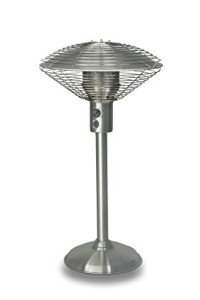Guide To Buy Outdoor Patio Heaters: The Intermediate Guide On Buy Outdoor Patio Heaters
Guide to Buying Outdoor Patio Heaters: Everything You Need to Know
As the cool evenings of fall and winter approach, many property owners and restaurant owners are on the lookout for ways to extend their outdoor enjoyment. Outdoor patio heaters supply a comfortable and inviting environment, making them important for alfresco dining, barbecues, or merely taking pleasure in a tranquil evening exterior. This guide intends to use a detailed overview of outdoor patio heaters, including the types offered, crucial functions to consider, suggestions for purchasing, and answers to often asked questions.
Kinds Of Outdoor Patio Heaters
Patio heaters are created in various designs and technologies to meet diverse needs. Here's a summary of the most typical types:
Heater Type
Description
Pros
Cons
Propane Heaters
Make use of liquid propane gas for heating, often portable with wheels for easy mobility.
Portable, high heat output.
Minimal run time; requires propane refills.
Gas Heaters
Connect directly to a gas line, supplying constant heat without the requirement for refills.
Practical and economical in the long term.
Permanently installed; less versatile.
Electric Heaters
Utilize electrical energy to produce heat, frequently in a smooth, modern design.
Easy to utilize; no emissions or fumes.
Higher energy expenses; restricted heat variety.
Infrared Heaters
Use infrared innovation to straight heat objects and people rather of the surrounding air.
Efficient and instant heat.
Limited variety; requirements electrical power.
Tabletop Heaters
Smaller sized, portable heaters developed to sit on tables for intimate seating arrangements.
Space-saving; stylish options available.
Limited heating capacity compared to larger models.
Secret Features to Consider
When picking an outdoor patio heater, it's crucial to examine different functions to ensure you make an informed decision. Here are some essential elements to think about:
Heat Output: Measured in BTUs (British Thermal Units), a higher BTU ranking suggests more heat output. For a comfy outdoor experience, try to find heaters providing between 30,000 to 50,000 BTUs.
Size and Capacity: The size of the heater ought to be in proportion to the space offered for heating. Think about the location size and the number of individuals you anticipate to entertain.
Product: Patio heaters are usually made from stainless-steel, aluminum, or copper. Stainless steel is robust and resistant to the aspects, which is ideal for outdoor usage.
Style: Choose a design that complements your outdoor design. There are Heating Equipment , consisting of freestanding, wall-mounted, and tabletop options. Consider what fits finest in your space.
Safety Features: Look for models with security features, such as an automatic shut-off switch, anti-tilt protection, and heat-resistant products. This ensures the security of your family and visitors.
Mobility: If you prepare to move your heater often, select a portable design with wheels or a lightweight style.
Fuel Type: Different fuel types provide special benefits. While relevant site are portable, natural gas heaters use a more cost-effective long-term heating solution if a connection is available.
Purchasing Tips
To maximize your investment in an outdoor patio heater, think about these tips while shopping:
Set a Budget: Determine your spending plan before browsing. Prices differ significantly depending upon size and features.
Read Reviews: Look for customer reviews online to gauge efficiency and dependability.
Store Seasonally: Prices may drop throughout off-seasons, making it the perfect time to score an offer.
Buy Only When Necessary: Assess your heating needs occasionally. If you hardly ever utilize the outdoor space throughout cooler months, prioritize quality over amount.
Think About Warranty and Support: Check for guarantee policies and customer assistance. A good guarantee can offer peace of mind.
Often Asked Questions (FAQs)
1. For how long does a propane tank last in an outdoor heater?
The runtime of a propane tank varies depending upon the BTU output of the heater. Usually, a basic 20 lb propane tank can last anywhere from 8 to 12 hours, depending upon the heat setting.
2. Can I use an outdoor patio heater inside your home?
No, outdoor patio heaters are not created for indoor use due to the danger of carbon monoxide poisoning and combustion dangers. Always use heaters in well-ventilated areas.
3. Do outdoor heaters work in windy conditions?
Some outdoor heaters might have a hard time to maintain heat in windy conditions, particularly those designed to radiate heat into the surrounding air instead of straight heating objects. However, wind-resistant models do exist.
4. What maintenance does an outdoor patio heater need?
Regular maintenance includes cleaning up the heater after usage, looking for gas leakages (if suitable), making sure all connections are protected, and saving the heater during harsh climate condition.
5. Is it safe to leave an outdoor heater ignored?
No, it is not suggested to leave outdoor heaters ignored, specifically those using open flame. Always shut off heaters when not in use, and guarantee children and pets are kept at a safe range.
Outdoor patio heaters are a valuable addition to any outdoor space, enabling homeowners and companies to take pleasure in the fresh air even when temperature levels drop. Understanding the different types of heaters, crucial features, and practical buying pointers will empower consumers to select the ideal unit that meets their specific needs. By thinking about security, upkeep, and the atmosphere you want to create, you can boost your outdoor living experience for several years to come.
